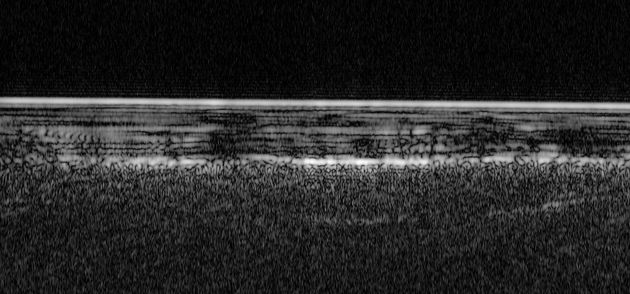A lake of liquid water has been detected on Mars, furthering our suspicions that the planet could once have supported or currently does support life.
While it has long been theorised that Mars has liquid water (it has polar ice caps just like Earth) this is the first clear evidence that backs up that theory.
Using data gathered from the European Space Agency’s Mars Express spacecraft, researchers trawled through radar data and finally found conclusive evidence of its existence.

We know that over the course of the planet’s 4.6 billion year history Mars did at one point contain oceans or at least lakes of liquid water on its surface. The evidence for this has been found by rovers and spacecraft that found dried out lake beds.
Instead, this newly discovered lake is believed to be buried deep underground the planet’s South polar ice cap.
To make the discovery, researchers tapped into Mars Express’ ground-penetrating radar which can send pulses down to the ground and then help us determine what materials lie beneath the surface.

Using that technique the researchers were able to discover that ice cap is made up of many layers of ice and dust that goes down to a depth of around 1.2km.
Looking at an area 20km wide they soon discovered a bright patch, an anomaly that didn’t conform with the rest of the surrounding landscape. It’s believed that this bright patch is in fact a lake of water buried deep underground.
What’s really remarkable about this discovery is that Mars Express launched in 2003, but until now the ESA simply weren’t able to get the resolution in the radar images that they needed.
“We’d seen hints of interesting subsurface features for years but we couldn’t reproduce the result from orbit to orbit, because the sampling rates and resolution of our data was previously too low,” adds Andrea Cicchetti, MARSIS operations manager and a co-author on the new paper.
“We had to come up with a new operating mode to bypass some onboard processing and trigger a higher sampling rate and thus improve the resolution of the footprint of our dataset: now we see things that simply were not possible before.”
Is this a sign of life on Mars?
No, not yet. We knew that Mars had the potential to support life under the surface but finding the evidence to prove it had always been difficult.
This discovery suggests that there could be a place somewhere between the surface of the planet and the core where it’s not too cold or too hot and liquid water can exist.
As the ESA points out, we know that some forms of life can exist here on Earth in subglacial environments. The question that now needs to be answered is whether life could also exist in Mars’ own subglacial lakes.
On of the hurdles to that could be the environment itself. For water to exist at all researchers suspect that it’s sediment rich and incredibly salty, thus lowering its melting point beyond the temperatures required here on Earth.